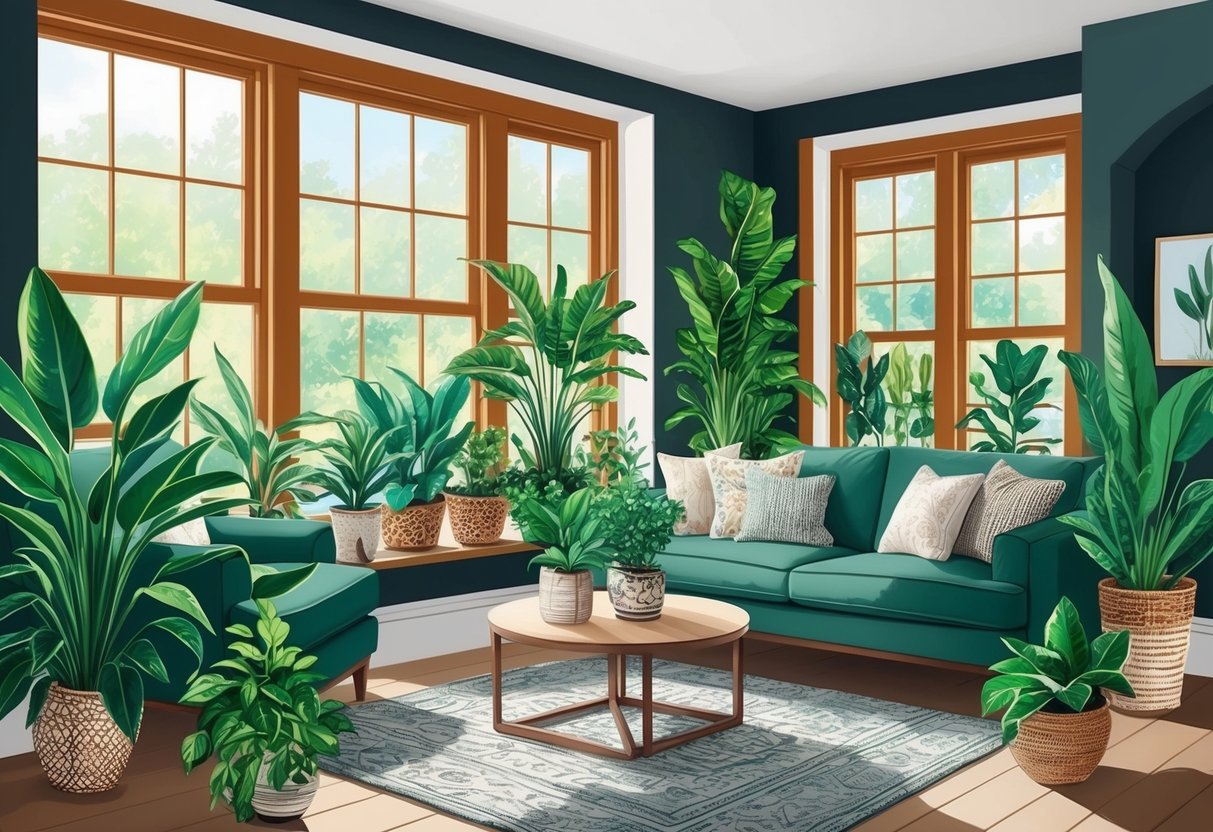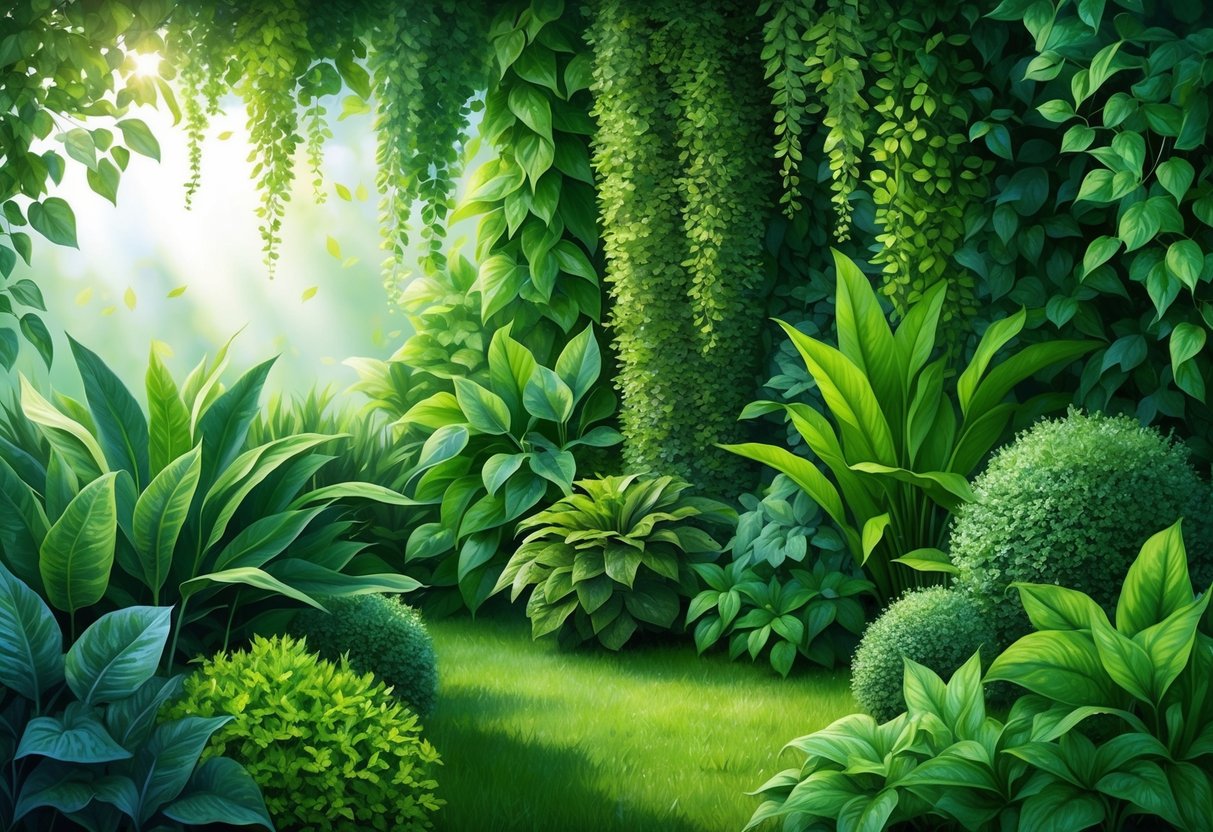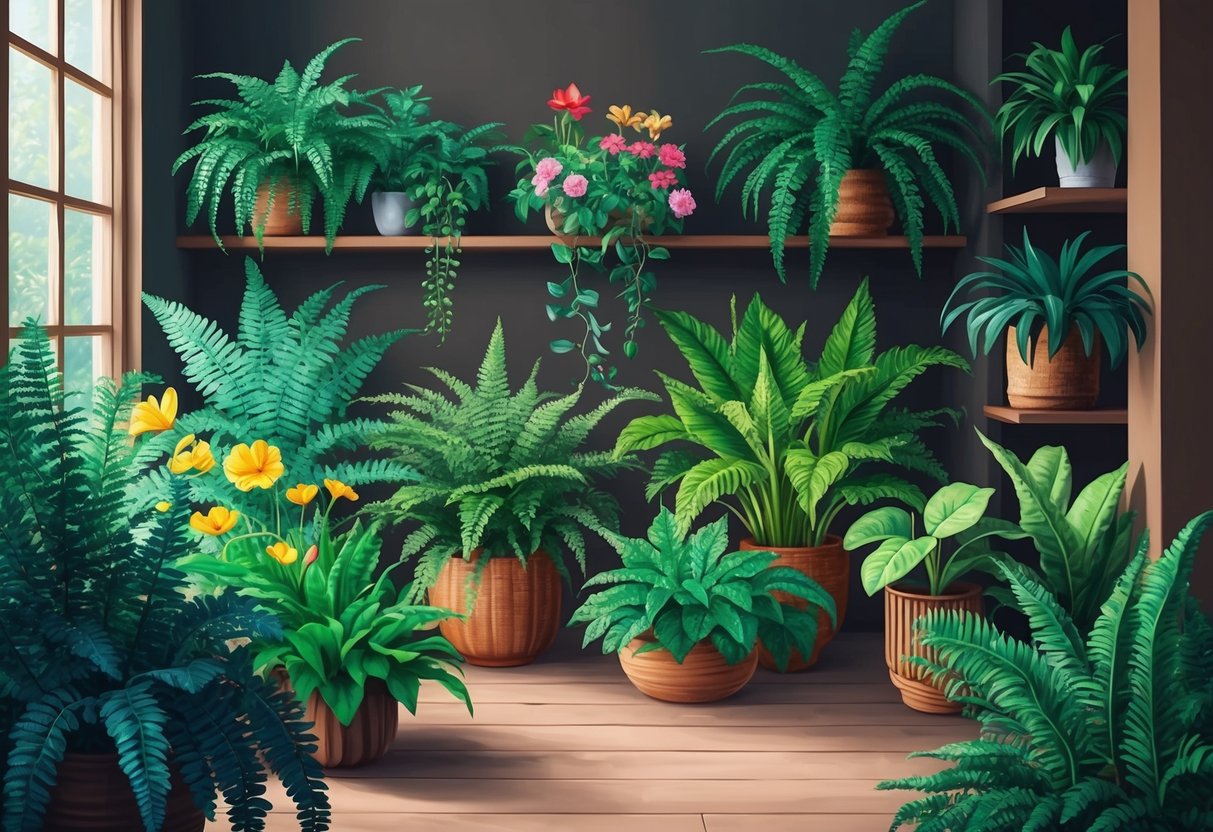
Grasses and Unique Textured Plants for Shaded Areas

Ornamental grasses and plants with unusual textures play an important role in shaded interiors. They add contrast, movement, and visual interest where green foliage can otherwise look flat.
Japanese Forest Grass
Japanese forest grass (Hakonechloa macra) is a standout ornamental grass favored for its arching, cascading form. Its slender leaves create a soft, flowing appearance, and many varieties feature gold-striped or lime-green foliage that remains vibrant in low light.
This grass performs best in indirect light with evenly moist, well-draining soil. Gardeners appreciate Japanese forest grass for its adaptability and easy care indoors.
Its slow growth habit ensures it won’t overwhelm containers or spaces. The healthy foliage also resists pests and leaf diseases.
Japanese forest grass works especially well in combination with ferns and broad-leafed shade-loving plants. It adds movement and varied texture to shaded corners.
Key Features:
- Arching, layered foliage with striking color
- Non-invasive and manageable growth
- Tolerates shade and average humidity
Dead Nettle
Dead nettle (Lamium maculatum) is an attractive ground cover with uniquely textured, heart-shaped leaves that often feature silver or white markings. This plant thrives in shaded spots, offering a splash of color from both its foliage and its small, pink or purple flowers.
Because it stays relatively low to the ground and spreads gently, it works well in mixed plantings. The textural leaves of dead nettle create a distinct contrast with smoother foliage.
Its drought tolerance once established and resistance to common pests make it appealing for low-light indoor spaces. It’s important to maintain consistent moisture levels in its soil, but dead nettle tolerates occasional lapses in watering.
Highlights:
- Silver-marked or variegated leaves with soft texture
- Gentle growth with minimal maintenance
- Brings color and texture to shaded planters
For more ideas on textured, shade-loving plants, see this shade-loving plant guide.
Hardy Perennials and Shrubs Suitable for Indoors

Indoor gardeners looking for varieties suited to low-light conditions often turn to reliable perennial and shrub selections. These plants can tolerate the challenges posed by shady corners while maintaining their visual appeal and durability.
Hostas
Hostas, popular for both shade gardens and indoor use, are resilient perennials valued for their lush, broad leaves. They thrive in low-light spaces, making them ideal for rooms with minimal sunlight.
Leaves come in shades of green, blue, or variegated patterns, adding vibrant color to dim areas. A key advantage of hostas is their low maintenance; they require minimal watering once established and adapt easily to pot culture inside.
They prefer consistently moist, well-draining soil but are tolerant of less-than-ideal indoor humidity. Considered non-toxic and generally pest-resistant, hostas fit well into family homes.
Common varieties, such as H. ‘Patriot’ and H. ‘June’, offer diverse leaf shapes and sizes. Hostas also brighten windowsills or desks and complement other shade-loving plants in indoor collections.
Design Tips for Creating Vibrant Shaded Indoor Spaces
Styling dim rooms with shade-loving houseplants involves more than placement. Details like plant height, leaf shape, and foliage color significantly boost the visual impact and sense of vibrancy in even the darkest corners.
Mixing Plant Heights and Textures
A visually engaging indoor plant display uses a blend of heights and textures. Using tall specimens such as snake plants or cast iron plants in the background creates structure.
Pair these with shorter species like Pilea or ferns to layer the arrangement. Texture contrast is key—broad-leafed plants, such as peace lilies, highlight more delicate varieties like maidenhair ferns.
Placing trailing plants like pothos or philodendron on shelves or stands adds vertical movement. This tiered approach draws the eye upward and makes compact or shaded spots feel spacious.
Arrange using odd-numbered clusters and group by varying leaf types—smooth, ridged, or ruffled. Below is a simple example of how plant texture adds interest:
| Plant Name | Height | Foliage Texture |
|---|---|---|
| Snake Plant | Tall | Firm, Upright |
| Boston Fern | Medium | Feathery, Soft |
| Pilea Peperomioides | Short | Smooth, Glossy |
Incorporating Colorful Foliage
Colorful foliage can brighten dark rooms without the need for flowers. Varieties like calathea, fittonia, and aglaonema bring deep greens, reds, or even purple markings to shaded nooks.
These bold hues make each plant stand out even in low light. Mixing foliage colors also prevents the space from feeling monotonous.
Group plants with similar light needs but distinct leaf patterns for the best effect. For instance, pairing a calathea with a variegated pothos combines stripes and marbling for a lively look.
Consider alternating foliage colors in tabletop arrangements or shelves. Use pots in neutral or deep shades to enhance the effect of leaf coloration.
For more ideas on plants well-suited to shaded rooms, see these shade-loving indoor plants and their foliage variety.